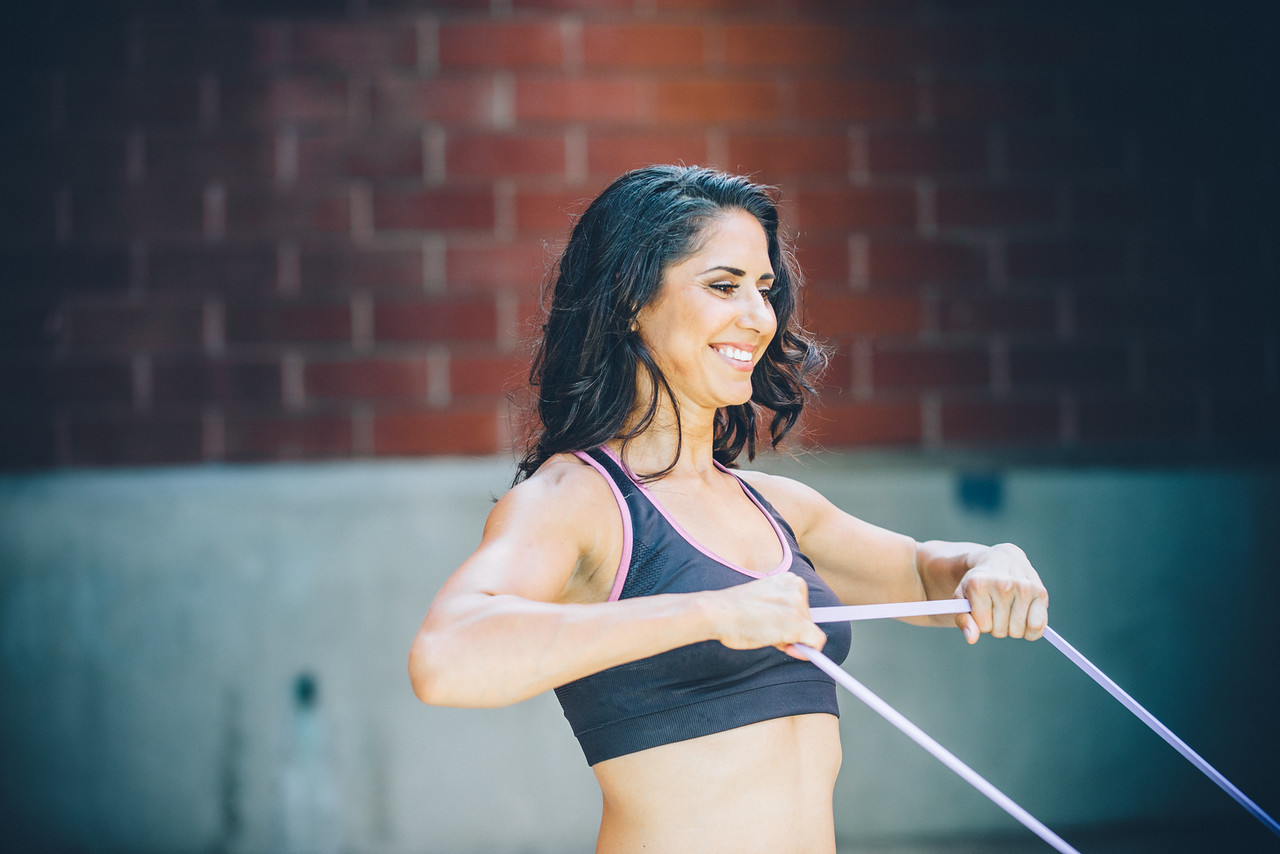bulk·y
(adjective): Taking up much space, typically inconveniently; large and unwieldy. A person heavily built. Synonyms: large, big, huge, substantial, massive
Whenever I hear the words “Lifting heavy makes me bulky” I can’t help but cringe. Afterall, science has shown that heavy lifting or any form of resistance training will not make anyone, male or female, bulky. Ask anyone who has tried to put on muscle and they’ll tell you that bulk isn’t built with heavy barbells and dumbbells alone. A nutrient dense diet, plus consistency and training creates bulk, and it doesn’t happen overnight.
So why the hell are we still concerned about getting bulky?
Bulk is in the eye of the beholder
It’s easy for fitness professionals or enthusiasts to scoff at the statement. We’ve heard both sides of the debate for decades, but for whatever reason, there are those that still believe in the myth that lifting heavy makes women bulky. The fitness industry is fighting the wrong battle – throwing out science and case studies at clients to disprove this statement and then blasting celebrity trainers for dishing out wrong information. I get it. Science is important and the trainers who make up their own science ‘facts’ in order to sell their services are shady. But this isn’t the real problem. Our problem as an industry is simply we’re just not listening.
I know, how revolutionary.
When we dismiss someone’s belief, however false or inaccurate it may be, and come at them with scientific truth bombs about testosterone levels, carb cycling, supersets, steroids, hormones…..we’re missing the bigger picture. And that is, she’s not afraid of heavy weights making her look bulky, she’s afraid of things like, not looking sexy in her favorite backless dress. Of not feeling feminine, confident, desirable, or worthy. Depending on the individual, “will heavy weights make me look bulky” often translates into “will heavy weights make me less feminine?”
Beauty and bulkiness is in the eye of the beholder. What she considers “too bulky” may not be what another fitness professional believes and we need to accept that. It’s not about us, it’s about her.
As an industry, we’ve dismissed these women’s fears and concerns and replaced them with fit inspo like this one:

Both bodies are beautiful. Photo credit
And this:
This is not inspiration, it’s bullying. It creates an “us” versus “them” mentality. Our so-called Inspo has done nothing but create a clear division between those that enjoy lifting heavy and those who don’t, and those with different body types, goals and genetics. Bulkiness is subjective. Every female trainee deserves to chase whatever aesthetics she wants, and our jobs as fitness professionals is to educate them and guide them toward that goal. That’s it.
A woman who fears lifting heavy and getting bulky doesn’t need to see a picture of some elite level CrossFitter on Instagram and told that her belief is bullshit. It’s not bullshit. Maybe she doesn’t want to look that way. Maybe she wants to look like a supermodel. Well, guess what? Supermodels lift heavy weights too. Just ask Kate Upton what she does in a single session with coach Ben Bruno.
Three Women, Three Bodies
If we want to dispel that myth that lifting weights will make women bulky, let’s aim to understand what each individual considers ‘bulky’ to begin with rather than dismiss their concerns with science. Then, let’s educate them around strength training and demonstrate that our bodies respond differently to depending on one’s individual goals, genetics, diet, program, and so forth. Here is a look at three different women (myself included) with different body types, backgrounds, and goals. Yet, we all lift heavy weights.
Name: Trish
Height: 5’3″
Weight: 135lbs
Best lift: Deadlift 209lbs
Body type: Curvy
Athletic background: Pilates, powerlifting, Olympic weightlifting, martial arts and long-distance running
Height: 5’7″
Weight: 157lbs
Best lift: Deadlift 341lbs
Body type: Athletic
Athletic background: Powerlifting
Name: Ali
Height: 5′ 2″
Weight: 115lbs
Best lift: Deadlift 215lbs
Body type: Petite
Athletic background: Dance, basketball, marathons, group fitness
Different women, different backgrounds, and all of us deadlift 200+ lbs. Our bodies respond to our training differently depending on what we’re focused on, how we’re eating, and how well we can manage stress. These bodies may not be what everyone aspires to, but again, this goes back to bulkiness being in the eye of the beholder.
How to lift without getting bulky
The answer is not lifting as light as possible. It’s not doing a million repetitions of the same exercise over and over again. We don’t need to “feel the burn”, but we do need to feel a challenge when we lift.
You want to sculpt your body, feel more feminine and strong at the same time without looking manly (whatever that may be for you)? Then pick up the challenging set of weights.
Lift heavy.
Train consistently.
Follow the rule of progressive overload.
Move better.
Eat better.
Sleep more.
We must overcome our fear of getting super ripped from heavy lifting because chances are, we won’t. The cost of getting ripped or super lean is well, hard, and not for everyone. Check this out to find out how difficult it is.
Strong. Feminine. Beautiful. These things exist in every body type, bulk or no bulk. Heavy weights or not. It’s always our choice.







